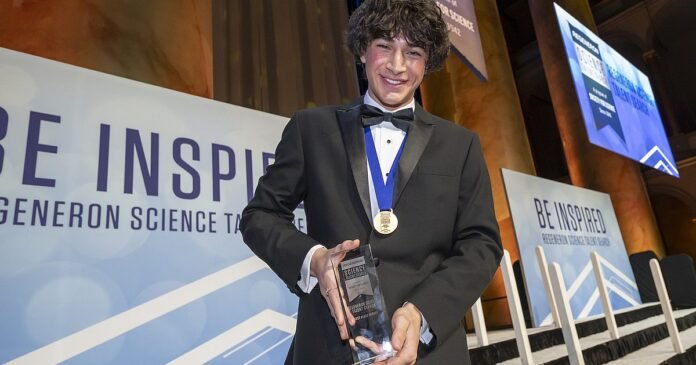Outer space fascinates Matteo Paz. It has for years. His mother took him to public stargazing lectures at the California Institute of Technology (Caltech) while he was in elementary school. That galactic curiosity paid off. Now a teen, Matteo created an AI model that analyzed years of NASA telescope data. He tracked 1.5 million potential new (previously unidentified) space objects. That includes supernovas and black holes. Not too shabby for an 18-year-old.
Matteo’s work took first prize in the 2025 Regeneron Science Talent Search, a national competition run by the Society for Science. The award included a gift of $250,000.
It all started when the high schooler attended the summer Planet Finder Academy at Caltech in 2022. Matteo studied astronomy and computer science under mentor Dr. Davy Kirkpatrick.
Kirkpatrick had been working with data from the retired NEOWISE infrared telescope. NASA launched NEOWISE in 2009. The telescope was designed to watch for near-Earth asteroids and comets. But it also collected data on variable objects. Those are things in the sky that change in brightness over time.
It was Kirkpatrick’s idea to hunt down these objects in NEOWISE’s understudied data. There were hundreds of billions of detections from over a decade. Kirkpatrick suggested he and Matteo “take a little piece of the sky” and look for variable stars.
Matteo expanded the goal. He made an AI model that sorted through all the raw data. It looked for tiny changes in infrared radiation. Such radiation is invisible to human eyes, but it emits heat. It’s the energy we feel from sunlight.
Kirkpatrick and Matteo kept working after the summer to perfect the AI algorithm. They were able to detect 1.5 million potential new objects. Kirkpatrick told Business Insider that prior to Matteo’s work, no one had tried to use the entire data table to detect and classify variable objects.
The use of long-wave infrared allows scientists to observe objects that were previously hidden by interstellar dust.
Caltech researchers are already making use of Matteo’s catalog, called VarWISE. They study binary star systems. (Those are two stars bound by gravity that orbit a common center. Think of them as “twins” in space.)
How will Matteo spend the $250,000 prize? He says it’ll go towards college. The sensible teen runs a project that helps teach school-age children about the basics of finances.
Matteo told BBC, “If I could give one piece of advice to young people with ambition—just start it. You are never going to know before you start where you could go.”
The heavens declare the glory of God. — Psalm 19:1
Why? We learn more about God’s character when we study what He made. Space holds grandeur that is worth investigating.
Fun Fact: NEOWISE stands for Near Earth Orbit Wide-field Infrared Survey Explorer.






